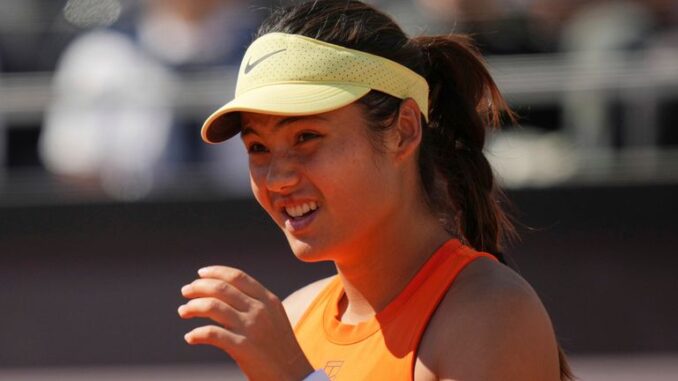
In a commanding display at the Italian Open, Coco Gauff delivered a tennis lesson to Emma Raducanu, securing a 6-1, 6-2 victory in their fourth-round clash in Rome. The 21-year-old American, a former US Open champion and a force on clay, showcased her superior athleticism and tactical acumen, ending the Briton’s promising tournament run in just 79 minutes. Gauff’s performance not only propelled her into the quarterfinals but also marked a historic milestone, making her the youngest player to reach four WTA 1000 clay tournament quarterfinals since 2009. Reflecting on the match, Gauff pinpointed the keys to her dominance, while Raducanu acknowledged the stark gap between herself and the world’s elite.
From the outset, Gauff asserted her authority on the red clay of Foro Italico’s Grand Stand Arena. Despite a double fault to open the match, she quickly found her rhythm, breaking Raducanu’s serve with a series of precise groundstrokes. The windy conditions posed a challenge, but Gauff adapted seamlessly, using her forehand to devastating effect. “It was definitely an A [performance] in difficult conditions,” Gauff said post-match, highlighting how her forehand “set me up for a lot of short balls and a lot of good points.” Her ability to move Raducanu around the court, forcing defensive play, was a cornerstone of her strategy, as she won 39 of 59 service points and fended off all three break points she faced.
Raducanu, ranked 49th in the world, entered the match buoyed by a career-first: three consecutive clay-court wins, including a gritty comeback against Veronika Kudermetova. Yet, facing Gauff proved a different proposition. The 22-year-old Briton struggled to counter Gauff’s high-bouncing returns and relentless depth, which pinned her behind the baseline. “I found it really hard today,” Raducanu admitted. “The conditions were so different. It was really windy and so high bouncing, and I just found like every ball was out of my strike zone, so I couldn’t really get a good hit.” Her frustration was palpable, as Gauff’s athleticism left her with “no space on the court,” making it difficult to dictate points.
The match was a study in contrasts. Gauff’s clay-court pedigree, honed by a French Open final appearance three years ago, shone through in her impeccable court coverage and heavy topspin. Raducanu, still adapting to the surface with only 21 career clay matches compared to 81 on hard courts, showed flashes of brilliance—a scorching cross-court forehand briefly unsettled Gauff—but lacked consistency. “Emma is a tough opponent no matter what surface, she’s tough to play,” Gauff noted, praising Raducanu’s resilience despite the lopsided scoreline. However, Gauff’s ability to save break points and capitalize on Raducanu’s 47% first-serve point win rate underscored her dominance.
For Raducanu, the defeat was a sobering reminder of the work needed to compete with top-tier players. “I felt outplayed today, but it was good to kind of see where I’m at in these conditions,” she said, maintaining a positive outlook. Her Rome campaign, which included wins over Maya Joint, Jil Teichmann, and Kudermetova, marked significant progress on a surface where she has historically struggled. With the French Open looming on May 25, Raducanu plans to build on this experience, potentially competing in Strasbourg to fine-tune her game. “I’m going to find a way to win the day still today,” she vowed, emphasizing her commitment to growth.
Gauff, meanwhile, continues to peak at the right time. Fresh off a Madrid Open final, she has won eight of her last nine clay matches, with her only loss to world No. 1 Aryna Sabalenka. Her focus on footwork and forehand consistency paid dividends against Raducanu, and she now faces Mirra Andreeva in the quarterfinals, a player she has defeated in all four career meetings. “My game is getting better every match,” Gauff said, signaling her intent to redeem her Madrid loss and contend for the Rome title.
This match, while one-sided, highlighted the evolving narratives of both players. For Gauff, it was a statement of her growing mastery on clay, blending power, precision, and poise. For Raducanu, it was a humbling yet valuable lesson, underscoring the physical and tactical layers she must add to challenge the elite. As the clay season progresses, Gauff’s trajectory points toward Roland Garros glory, while Raducanu’s resilience promises a brighter future on the red dirt.
Leave a Reply